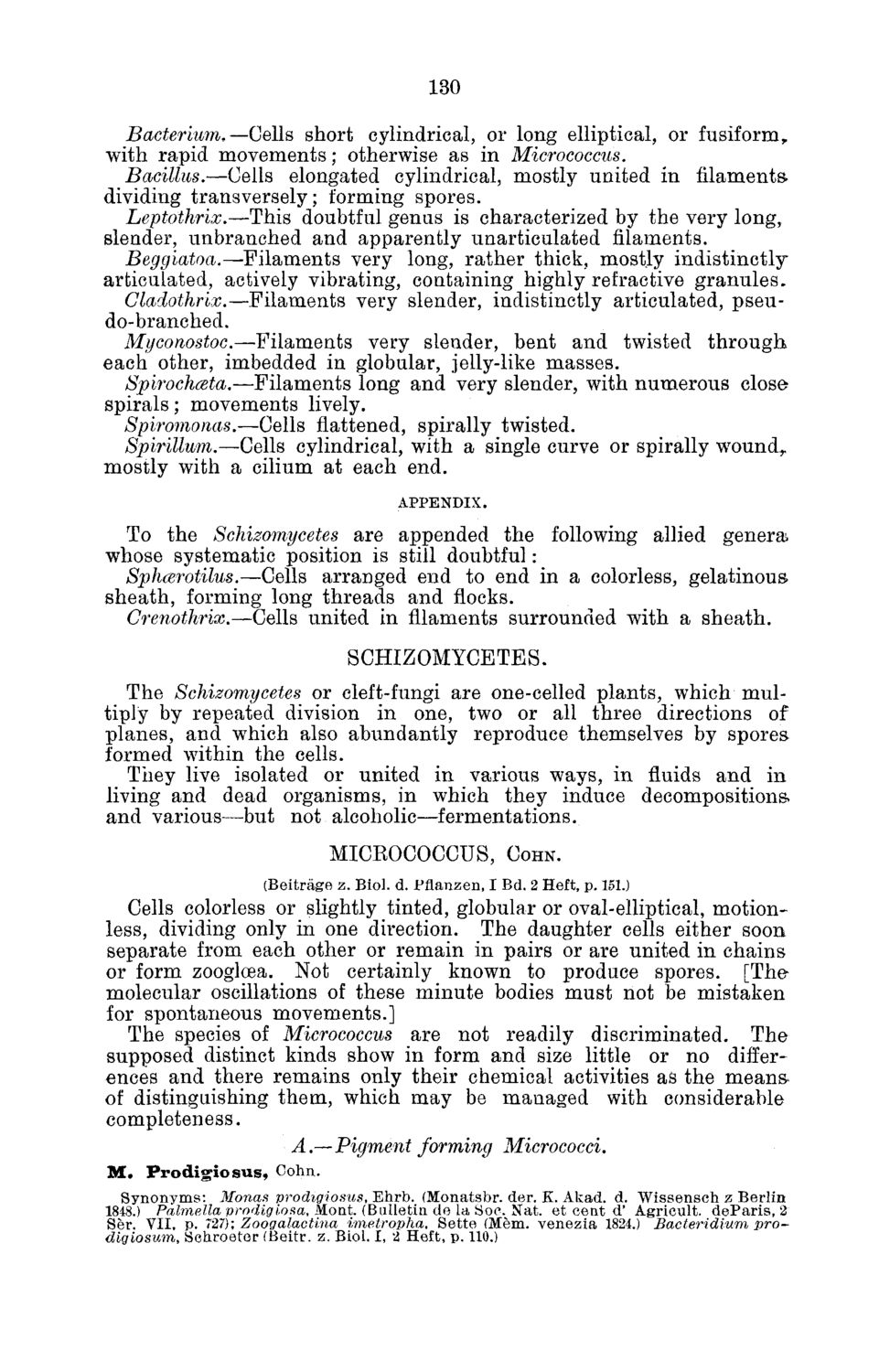| |
| |
Caption: Board of Trustees Minutes - 1882
This is a reduced-resolution page image for fast online browsing.

EXTRACTED TEXT FROM PAGE:
130 Bacterium,—Cells short cylindrical, or long elliptical, or fusiform„ with rapid movements; otherwise as in Micrococcus. Bacillus.—Cells elongated cylindrical, mostly united in filamentsdividing transversely; forming spores. Leptothrix.—This doubtful genus is characterized by the very long, slender, unbranched and apparently unarticulated filaments. Beggiatoa.—Filaments very long, rather thick, mostly indistinctly articulated, actively vibrating, containing highly refractive granules. Cladothrix.—Filaments very slender, indistinctly articulated, pseudo-branched. Myconostoc.—Filaments very slender, bent and twisted through each other, imbedded in globular, jelly-like masses. Spirochceta.—Filaments long and very slender, with numerous close spirals; movements lively. Spiromonas.—Cells flattened, spirally twisted. Spirillum.—Cells cylindrical, with a single curve or spirally wound^ mostly with a cilium at each end. APPENDIX. To the Schizomycetes are appended the following allied genera, whose systematic position is still doubtful: Sphcerotilus.—Cells arranged end to end in a colorless, gelatinous sheath, forming long threads and flocks. Crenothrix.—Cells united in filaments surrounded with a sheath. SCHIZOMYCETES. The Schizomycetes or cleft-fungi are one-celled plants, which multiply by repeated division in one, two or all three directions of planes, and which also abundantly reproduce themselves by spores formed within the cells. They live isolated or united in various ways, in fluids and in living and dead organisms, in which they induce decompositions* and various—but not alcoholic—fermentations. MICEOCOCCUS, COHN. (Beitrage z. Biol. d. Pflanzen, I Bd. 2 Heft, p. 151.) Cells colorless or slightly tinted, globular or oval-elliptical, motionless, dividing only in one direction. The daughter cells either soon separate from each other or remain in pairs or are united in chains or form zoogloea. Not certainly known to produce spores. [The molecular oscillations of these minute bodies must not be mistaken for spontaneous movements.] The species of Micrococcus are not readily discriminated. The supposed distinct kinds show in form and size little or no differences and there remains only their chemical activities as the means of distinguishing them, which may be managed with considerable completeness. A.—Pigment forming Micrococci. M . P r o d i g i o s u s , Cohn. Synonyms: 3£onas prodigiosus, Ehrb. (Monatsbr. der. K. Akad. d. Wissensch z Berlin 1848.) Palmella prodigiosa, Mont. (Bulletin de la Soe. Nat. et cent d' Agricult. deParis, 2 Ser. VII. p. 727); Zoogalactina imetropha, Sette (Mem. venezia 1824.) Bacteridium prodigiosan, Schroeter (Beitr. z. Biol. I, 2 Heft, p. 110.)
| |